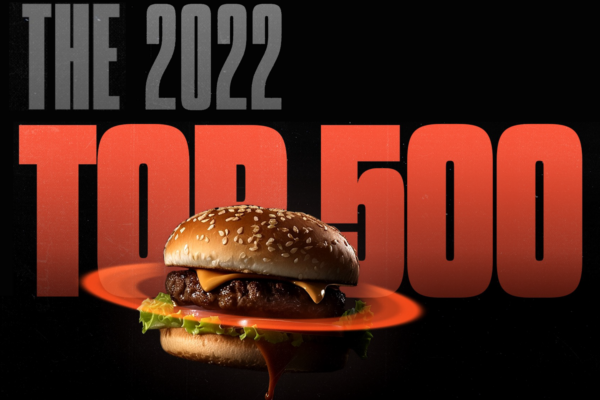Eve Turow-Paul recently joined us for the second season’s first episode of our webinar to discuss how lifestyle trends are linked to food interests and how different trends are being played out in new ways due to COVID-19.
Food is defining a generation.
Millennials are obsessed with food. While previous generations relied on music to define themselves, millennials are looking to food. They’re eating it, making it, talking about it, and posting it all over their Instagram feed.
Food has become so ingrained in our lives that many food trends are directly linked to lifestyle trends. Consider, for example, individuals who engage with biohacking diets like intermittent fasting. Those individuals are likely to also do CrossFit and cryogenic therapy. Certain lifestyle interests are directly tied to dietary preferences.
Today, tech-tethered is typical.
In Turow-Paul’s The Hungry Study, 57% of participants qualified as being “tech-tethered.” Despite essentially being appendages, our phones aren’t great for us. The paradox of choice is causing more anxiety than ever. Additional digital age woes include:
- Stress
- Depression
- Loneliness
- Envy
Unfortunately, these woes align closely with humans’ basic well-being needs of feeling:
- Safe or in control
- Part of a community or a sense of belonging
- A sense of meaning or purpose
As a result, even before the global pandemic hit earlier this year, people were already super anxious as a collective result of 24/7 access to news, constant notifications, and tech burnout.
Yet, food continues to provide solace for individuals in each of the 3 needs. Each section below will explore how food meets a need typically as well as how food is currently meeting well-being needs during COVID-19.
Cooking provides control.
By nature, eating provides a lot of control in a relatively unstable world. There is constantly so much going on that we can’t control; being able to sit down 3 times a day and choose what you put in your body can make you feel as though you’re in charge.
Retail companies and restaurants have been able to take advantage of this desire for control by increasing consumer knowledge through transparency, food origin stories, and increasing labels. For restauranteurs specifically, providing “meet the chef” opportunities help diners feel more in control by understanding who’s feeding them.
We’ve seen consumers go to some pretty crazy distances to be in control since the pandemic was first announced, including hoarding and stockpiling food. As people seek to regain control, we’re also seeing an influx of consumers returning to old favorites like comfort foods and even growing their own food at home.
As an operator, explore ways you can give customers more insight into what goes on behind the scenes. Consider adding a Meet the Chef section to your menu or doing more storytelling about where ingredients are sourced from. Closures due to COVID-19 can be a great opportunity to pivot toward meal kits or other assemble-at-home dishes & drinks to cater to the need for control.
People yearn to love, be loved, and belong.
One of the biggest trends we’ve seen over the last decade is extraordinarily high rates of loneliness. In fact, in The Hungry Study, 65% of the general population said they wished they had a stronger community, compared with 73% of Millennials.
Now that the digital age has us as connected as ever, why are we so lonely? There are a few main cultural shifts that contribute to our collective loneliness: people are moving away from family, we’re less likely to attend religious institutions, and we’re less likely to know our neighbors.
One way that people are coping with their sense of loneliness is by following influencers. Similarly, influencers view their followers as their family. Diet tribes like Whole 30, paleo, and vegan can be avenues for finding community.
Before COVID-19, people found their communities through shared experiences. Sharing meals, attending boutique fitness studios, and wellness rituals all provided an opportunity to cultivate a community.
During COVID-19, we’re finding new shared experiences to bond over. If it’s laughing at the ridiculousness of Tiger King over Zoom with your coworkers or joining a friend’s Facebook Live stream, digital tools continue to create a community hub.
Now more than ever, people are looking for communities they can be a part of, even from a distance. Explore opportunities to meet those needs through your marketing, digital events, and more.
People want to feel as though they have a purpose.
The last of Turow-Paul’s well-being needs is the need to feel like you have a purpose. But you don’t need to join Doctors Without Borders to have meaning. Achieving your goals or mastering a new skill can provide tremendous satisfaction.
Back when humans had to hunt for food, they felt incredibly accomplished just being able to find it. Today, getting food isn’t as hard. In fact, most often, we’re largely removed from the food preparation process. During quarantine, learning how to make sourdough bread from scratch or grow your own tomatoes from seed has brought immense satisfaction to many individuals.
Restaurants can give individuals a sense of meaning by laddering back to people’s value systems and giving back in some way. If restaurants can provide a sense of purpose, they’ll have a leg up on competitors who are solely meeting the other needs.
How can you meet the consumer desire for well being?
Our well-being needs aren’t changing, but the way we meet them is. COVID-19 has dramatically changed how we achieve feelings of safety, belonging, and meaning. Your restaurant or retail company needs to be ready to meet consumers’ needs in new ways.
Watch the full webinar recording to hear everything Eve Turow-Paul shared. The full webinar recording is here, and be sure to register to attend future webinars.









